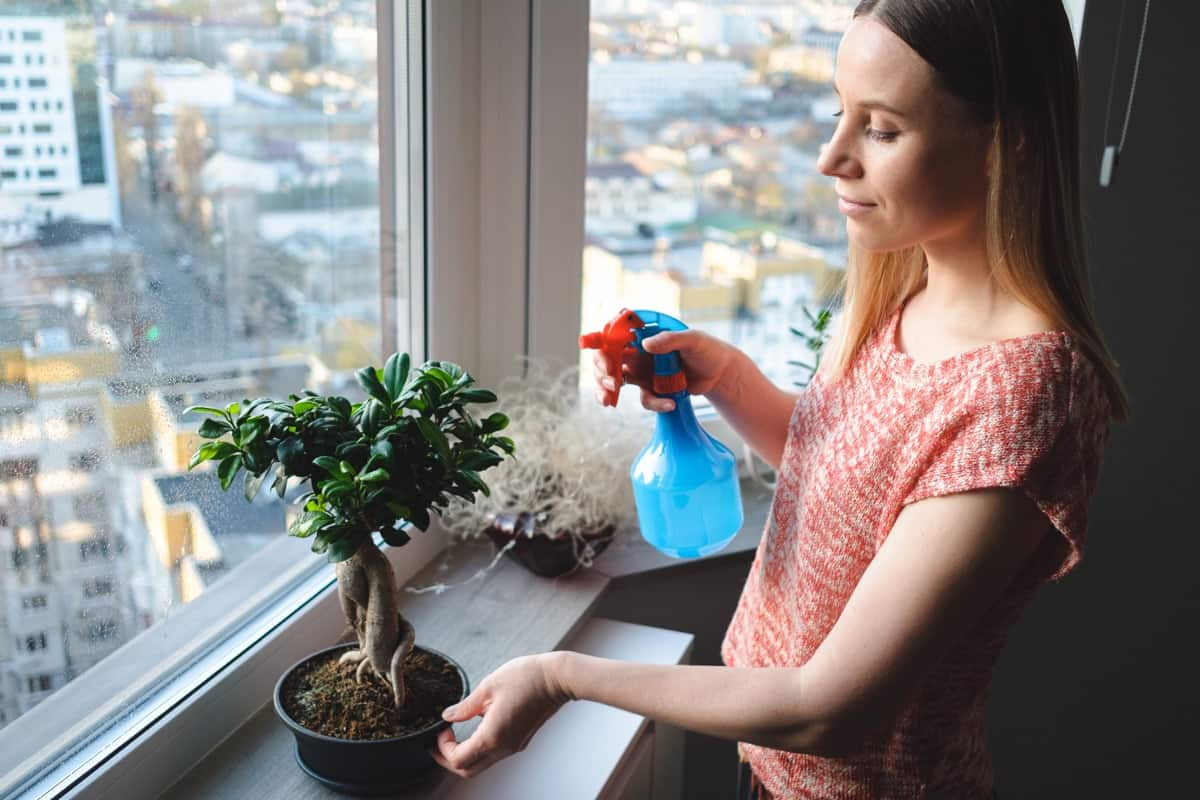Japanese Winterberry Bonsai is an ornamental tree popular among gardening enthusiasts for its vibrant red berries and twisted, appealing branches. This tree is one of the many bonsai trees outdoors that brings an exquisite touch to any setting. Understanding how to plant, grow, and care for it is key to enjoying this unique botanical art form. The world of bonsai trees is expansive, with various species that vary in care requirements. Today, we will focus on the Japanese winterberry bonsai and provide comprehensive instructions for its maintenance and growth.

How to Grow and Care for Japanese Winterberry Bonsai
Choosing the Right Bonsai Japanese Winterberry
When deciding on the perfect bonsai, one must consider several factors, such as climate, care requirements, and personal aesthetics. A Japanese winterberry bonsai tree is an excellent choice due to its resilience and exceptional beauty. Its miniature form makes it ideal for bonsai practices, with the tree’s characteristics enhancing over time, adding a sense of antiquity to your garden. When choosing, select a healthy tree with a strong root system and no visible signs of pests or diseases.
Preparing the Soil for Bonsai Japanese Winterberry
Once you’ve chosen your Japanese winterberry bonsai, the next step is preparing the soil. The correct soil mix is crucial for the health and growth of the tree. It should be well-draining to avoid waterlogging yet capable of retaining adequate moisture and nutrients. A mix of peat moss, perlite, and grit or coarse sand can balance your bonsai. The peat moss retains moisture and nutrients, the perlite ensures good drainage, and the grit provides aeration for the roots.
In case you missed it: How to Grow and Care for Blueberry Bonsai: Planting, Pruning, and Repotting

Planting Bonsai Japanese Winterberry Tree in a Container
Bonsai trees are typically grown in containers, making them ideal for indoor and outdoor settings. When planting your Japanese winterberry bonsai, choose a container that has adequate drainage and is proportionate to the size of the tree. Place a layer of soil mix in the bottom of the container, then position your tree, spreading its roots gently over the soil. Fill the remaining container with soil, firming it gently around the roots to provide stability.
Watering Techniques for Bonsai Japanese Winterberry
The correct watering techniques are crucial in caring for your Japanese winterberry bonsai. Over or under-watering can lead to problems such as root rot or drying out. Water your bonsai when the top layer of soil begins to dry out. Use a gentle spray to avoid disturbing the soil or damaging the foliage. Thoroughly soak the soil until water starts draining from the bottom of the pot.
In case you missed it: How to Grow and Care for Crabapple Bonsai: Planting, Pruning, and Repotting

Fertilizing Bonsai Japanese Winterberry
Fertilizing your bonsai ensures it receives all the nutrients for growth and berry production. Use a balanced fertilizer and adhere to the package instructions for how much to apply and how often. The best time to fertilize is during the growing season, generally from spring to early fall. However, avoid fertilizing after repotting, as this can stress the tree.
Pruning and Shaping Bonsai Japanese Winterberry
Pruning and shaping are critical elements in the maintenance of bonsai trees. Regular pruning promotes denser growth, keeps the tree miniature, and enhances its shape. For Japanese winterberry bonsai, prune the branches and leaves to maintain the desired form and remove any dead or diseased parts. Shaping, often done through wiring, involves carefully manipulating the branches to create aesthetic designs.
Protecting Bonsai Japanese Winterberry From Pests and Diseases
A well-cared-for bonsai tree is generally resistant to pests and diseases, but some precautions can help. Check your tree often for pests or diseases. Symptoms could include discoloration, spots on the leaves, or a lack of vigor. Isolate-affected trees to prevent the spread of the problem. Non-chemical pest control methods are generally preferred due to the delicate nature of bonsai trees.
Providing Adequate Sunlight for Bonsai Japanese Winterberry
Sunlight plays an integral role in the growth and health of a bonsai tree. Japanese winterberry bonsai requires full to partial sunlight for optimal growth. Excessive sunlight can burn the leaves. Strive for a balance where the tree gets enough light for photosynthesis without getting overheated.
Maintaining Temperature and Humidity for Bonsai Japanese Winterberry
Optimal temperature and humidity are vital for the health of your bonsai. The Japanese winterberry bonsai prefers a cooler climate but can tolerate various temperatures. To add humidity indoors, place the pot on a tray of wet pebbles. Avoid drafts and sudden temperature changes, as these can cause stress to the tree.
Repotting Bonsai Japanese Winterberry
Repotting is essential in bonsai cultivation, ensuring the tree doesn’t become root-bound and continues to receive sufficient nutrients. Repot your Japanese winterberry bonsai every two to three years or when you notice the tree’s growth slowing down. Choose a slightly larger container and fresh soil for each repotting.
Creating a Winter Dormancy for Bonsai Japanese Winterberry
An important consideration in caring for a bonsai Japanese winterberry is its need for a winter dormancy period. In nature, these trees experience cold winters, which triggers them to go into a resting phase. To recreate this in an indoor or mild climate setting, reduce watering and move the bonsai to a cooler, protected area during winter. This allows the tree to rest and prepare for vigorous growth come spring.
Displaying Your Bonsai Japanese Winterberry
Once you have planted, pruned, and nurtured your bonsai Japanese winterberry, it’s time to display it for all to admire. Bonsai are often displayed on stands, which highlight the miniature landscape created. When deciding where to place your bonsai, consider its care needs and aesthetics.
It should be somewhere it can receive the right amount of sunlight, be easily watered, and be viewed from multiple angles. Remember, a bonsai’s purpose is to bring nature’s tranquility into a small space, so choose a peaceful and suitable spot for your bonsai Japanese winterberry.
Understanding the Seasonal Cycle of Bonsai Japanese Winterberry
Gaining knowledge about the seasonal cycle of the bonsai Japanese winterberry is vital for its long-term care and health. Like their full-sized counterparts, these trees go through stages of growth, dormancy, flowering, and fruiting throughout the year. Spring is a time of growth and renewal, where watering and fertilizing should be at their highest.
The tree is most active in summer, needing constant care and attention. The tree prepares for dormancy during fall, reducing its growth and watering needs. Winter is a period of rest. The leaves may drop, and the tree needs less water and no fertilization. Understanding these cycles can help synchronize your care routine with the tree’s natural rhythms, leading to a healthier and more visually appealing bonsai.
Conclusion
Planting, growing, and caring for a bonsai Japanese winterberry requires a balance of artistry and horticulture. Patience and consistent care are key to successfully growing this vibrant and unique bonsai tree species. With these tips and techniques, experience the serenity and charm of this miniature natural world.
- Feed Your Flock for Less: Top 10 Tips to Save on Chicken Feed
- Ultimate Guide to Ossabaw Island Hog: Breeding, Raising, Diet, and Care
- Hatching Answers: The Top 10 Reasons Your Chickens Aren’t Laying Eggs
- Eggs and Economics: Breaking Down the Cost of Raising Backyard Chickens
- Defend Your Greens: Proven Methods to Keep Iguanas Out of Your Garden
- Ultimate Guide to Cinnamon Queen Chicken: A Comprehensive Guide for Beginners
- Ultimate Guide to California Tan Chicken: Breeding, Raising, Diet, Egg-Production and Care
- Ultimate Guide to Marsh Daisy Chicken: Breeding, Raising, Diet, and Care
- 10 Types of Chicken Farming Businesses You Can Start for Profits